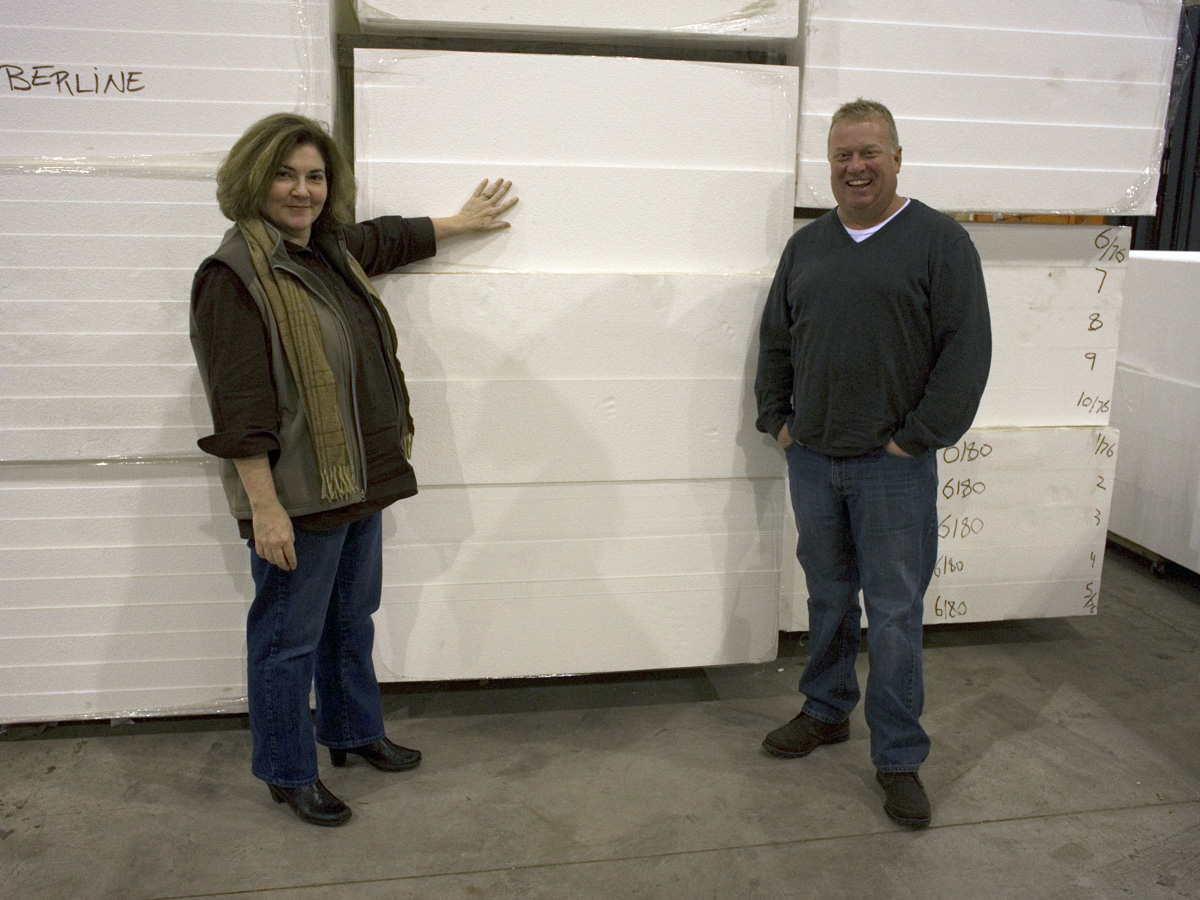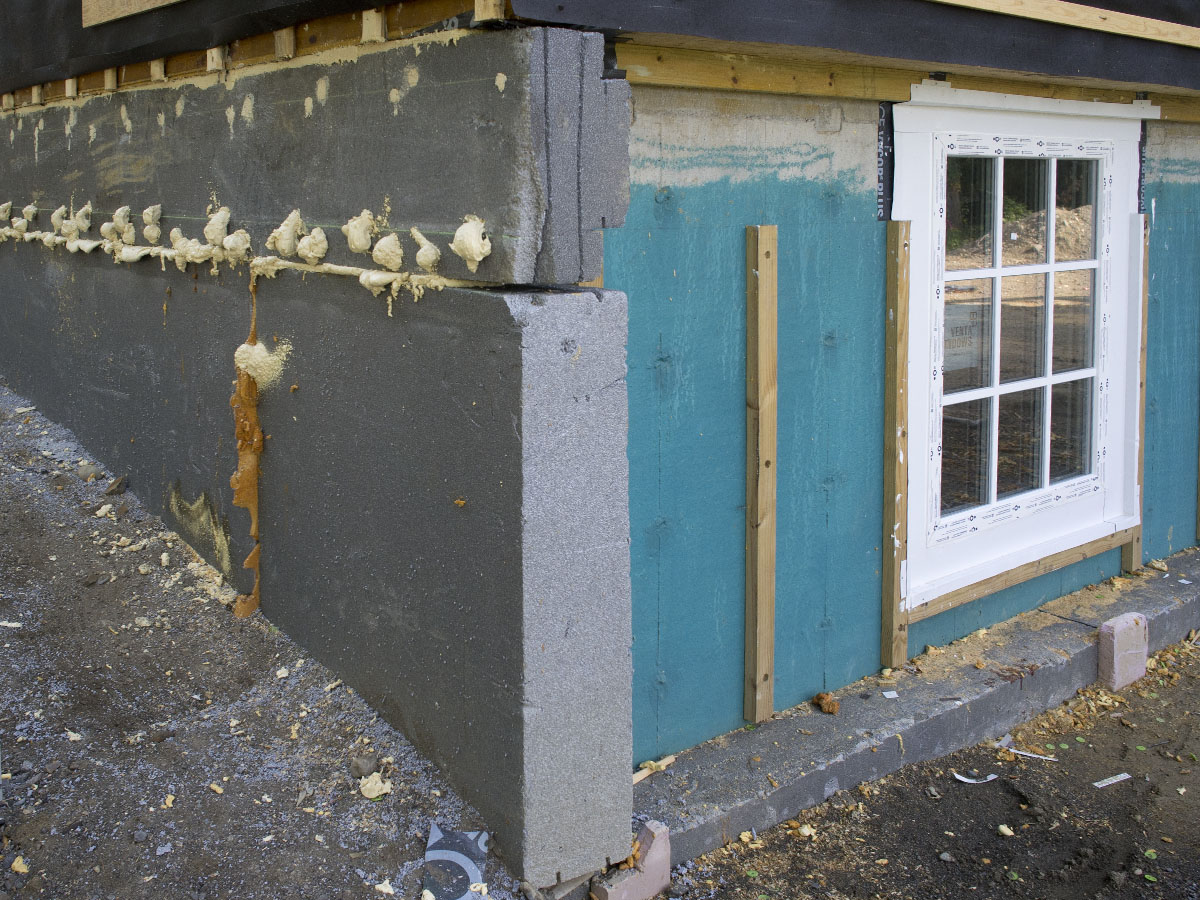
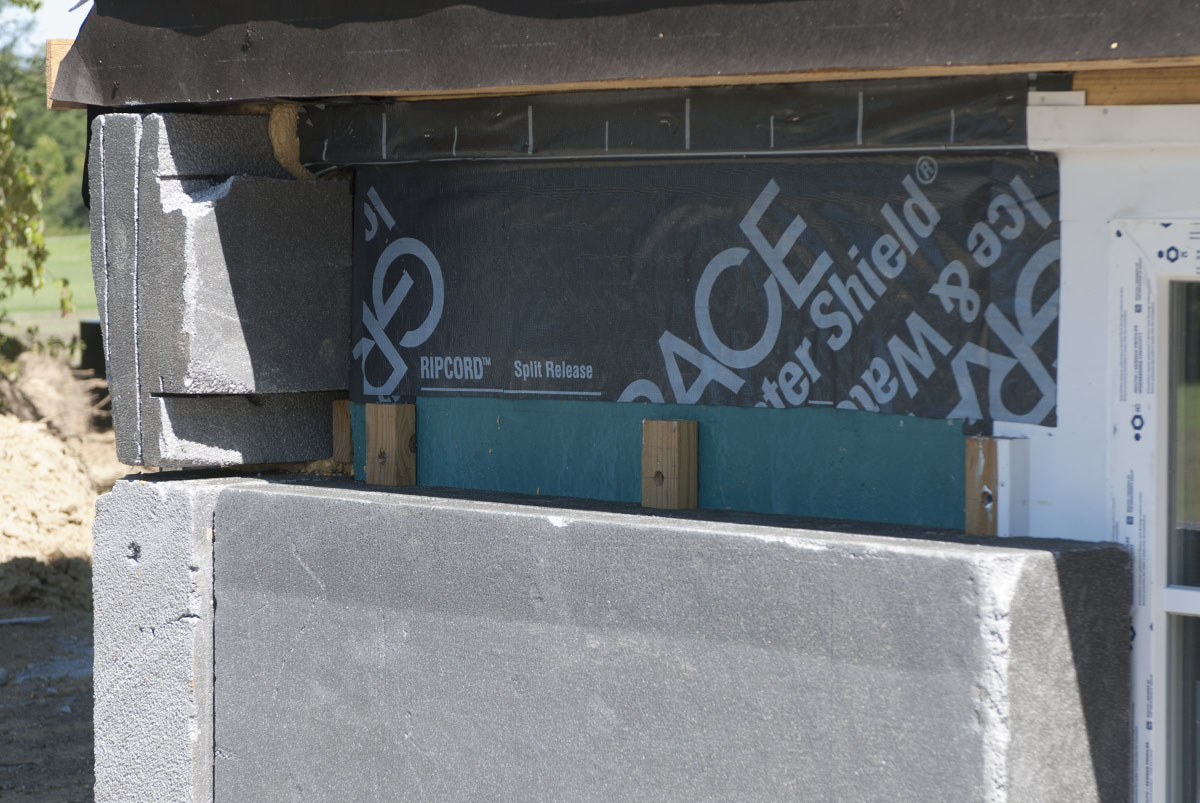
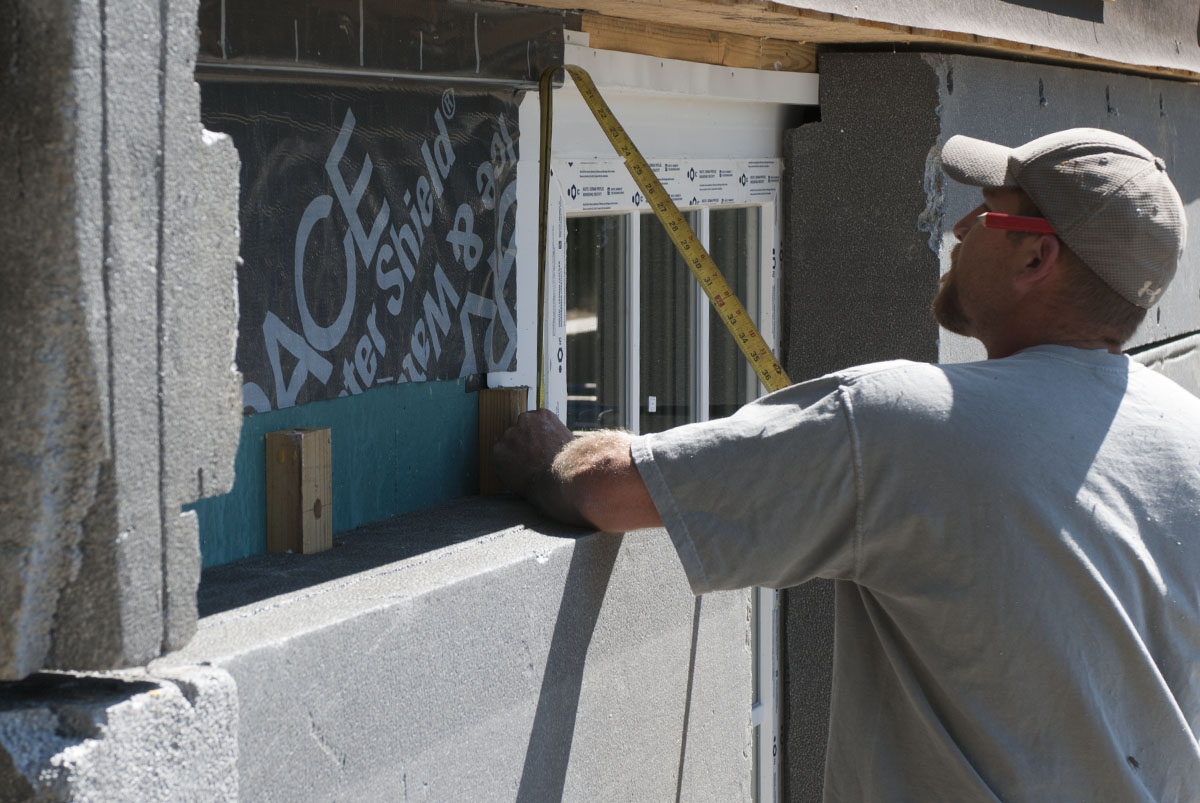
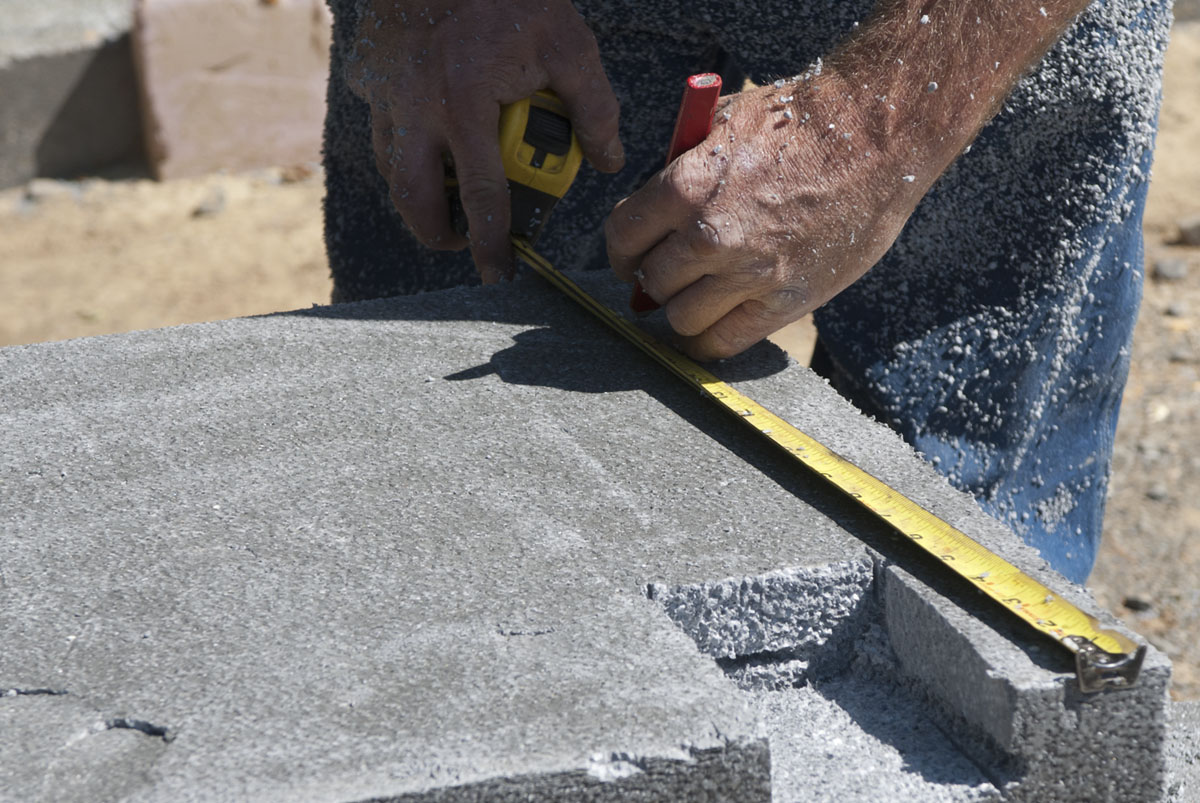
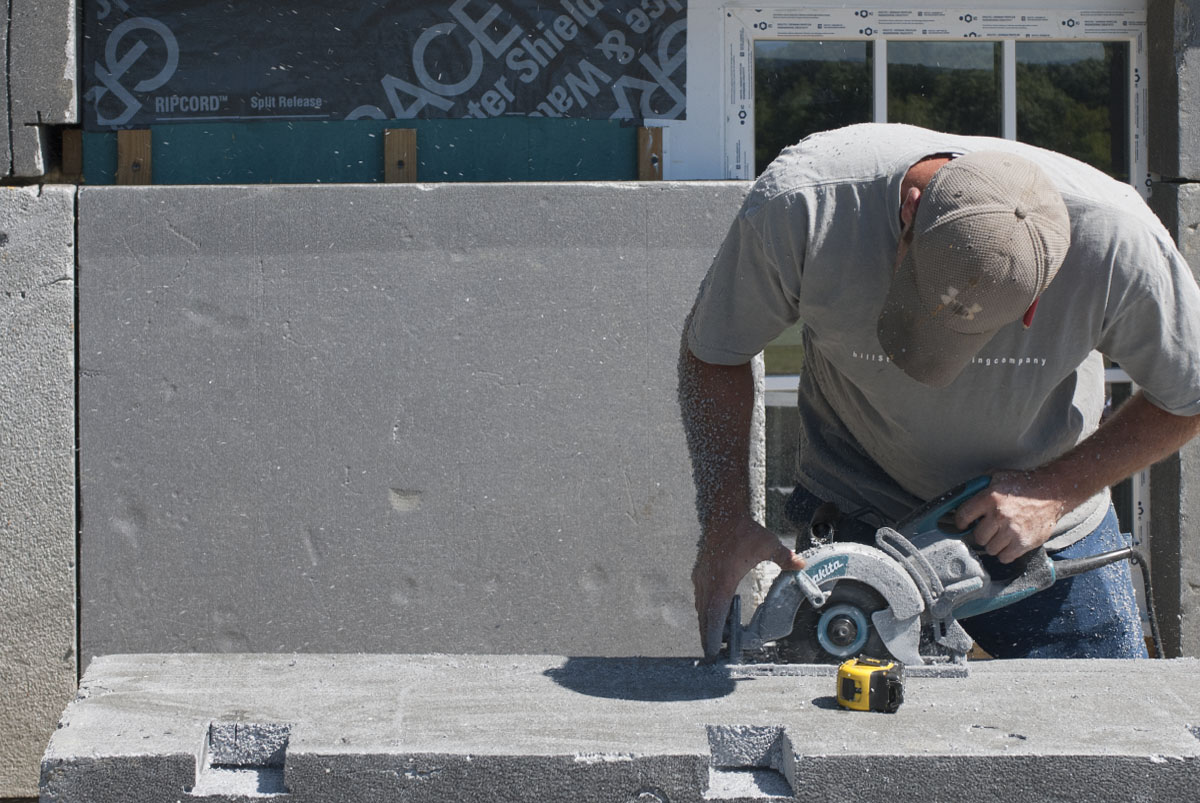
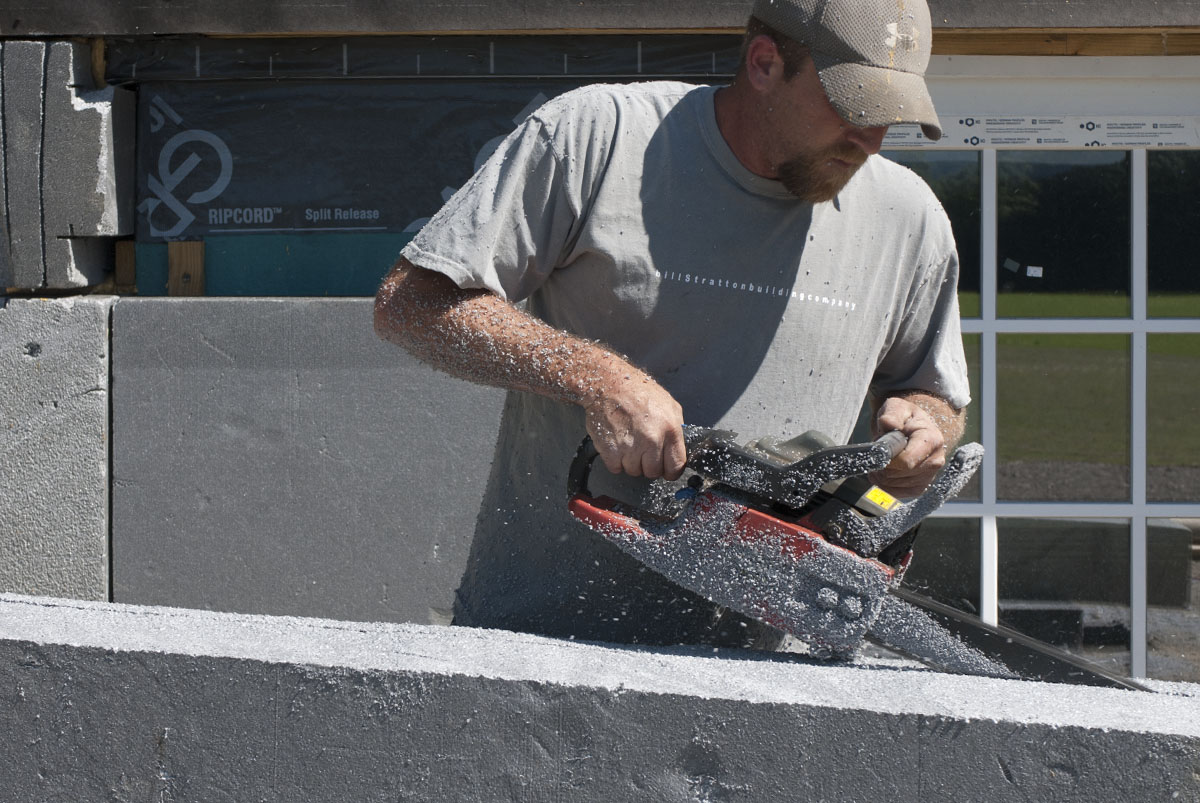
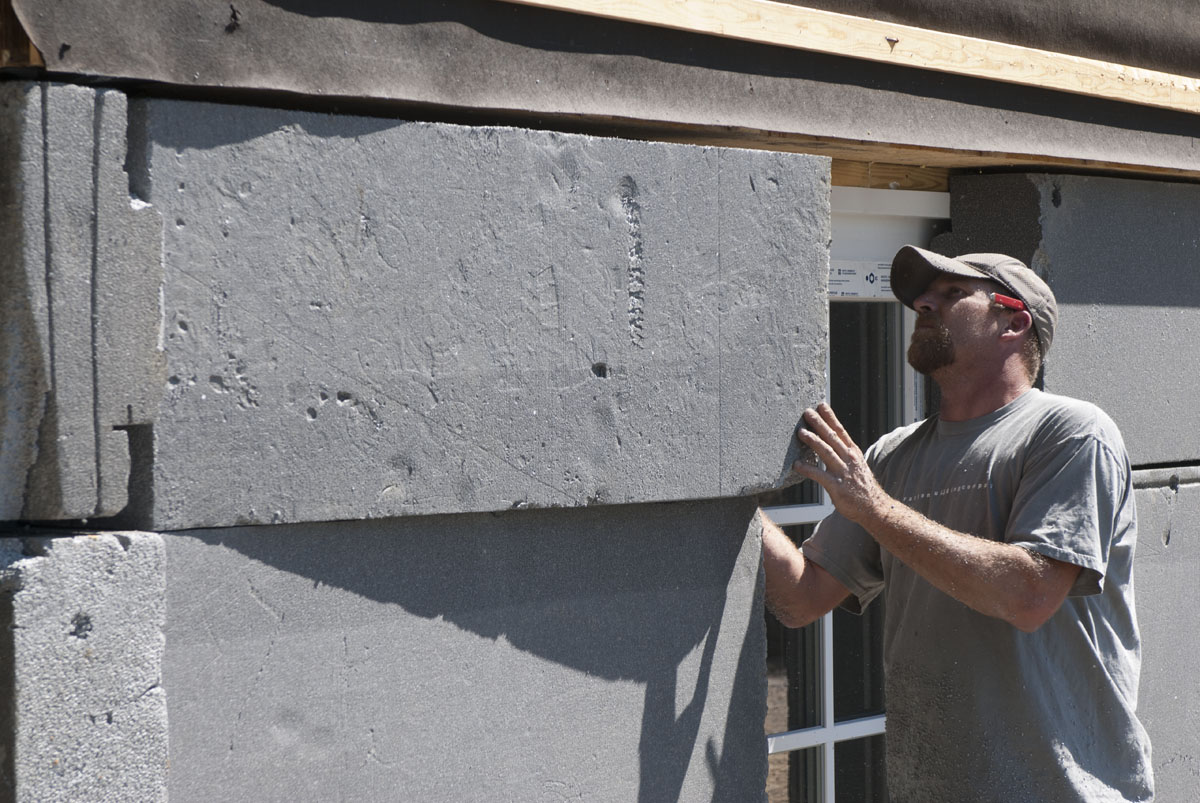
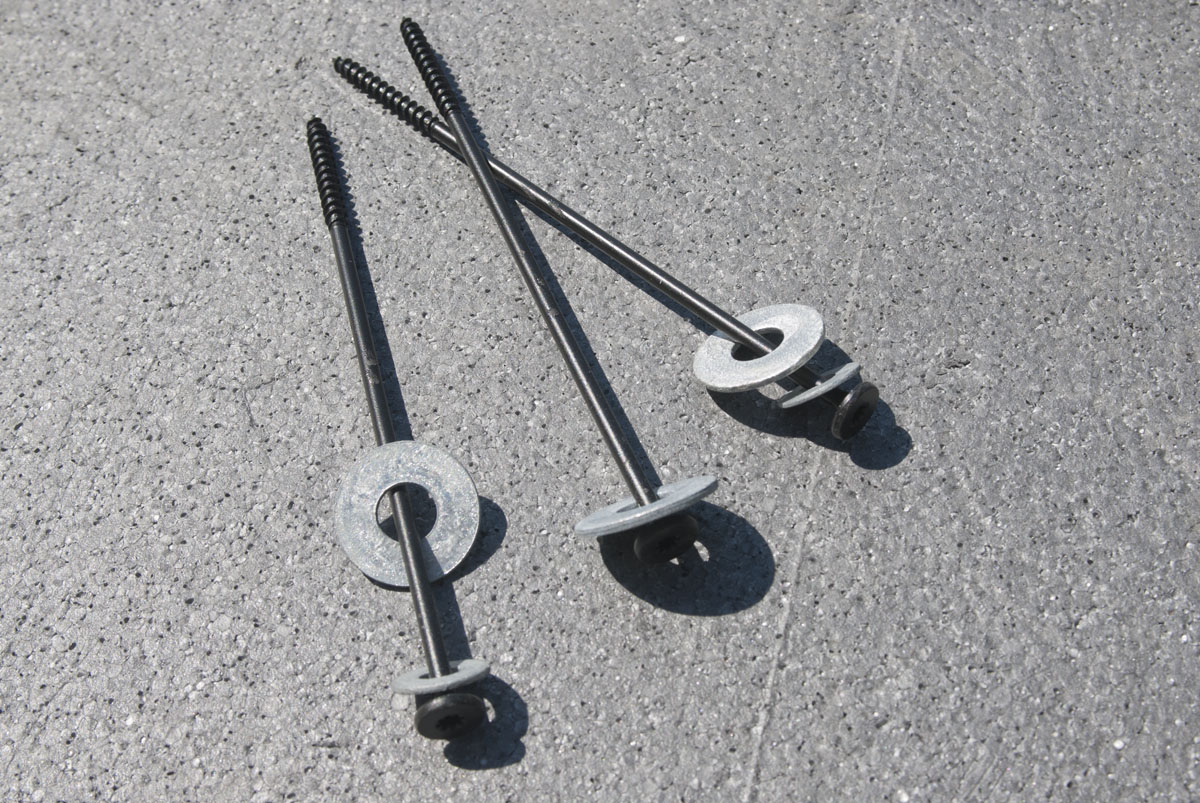
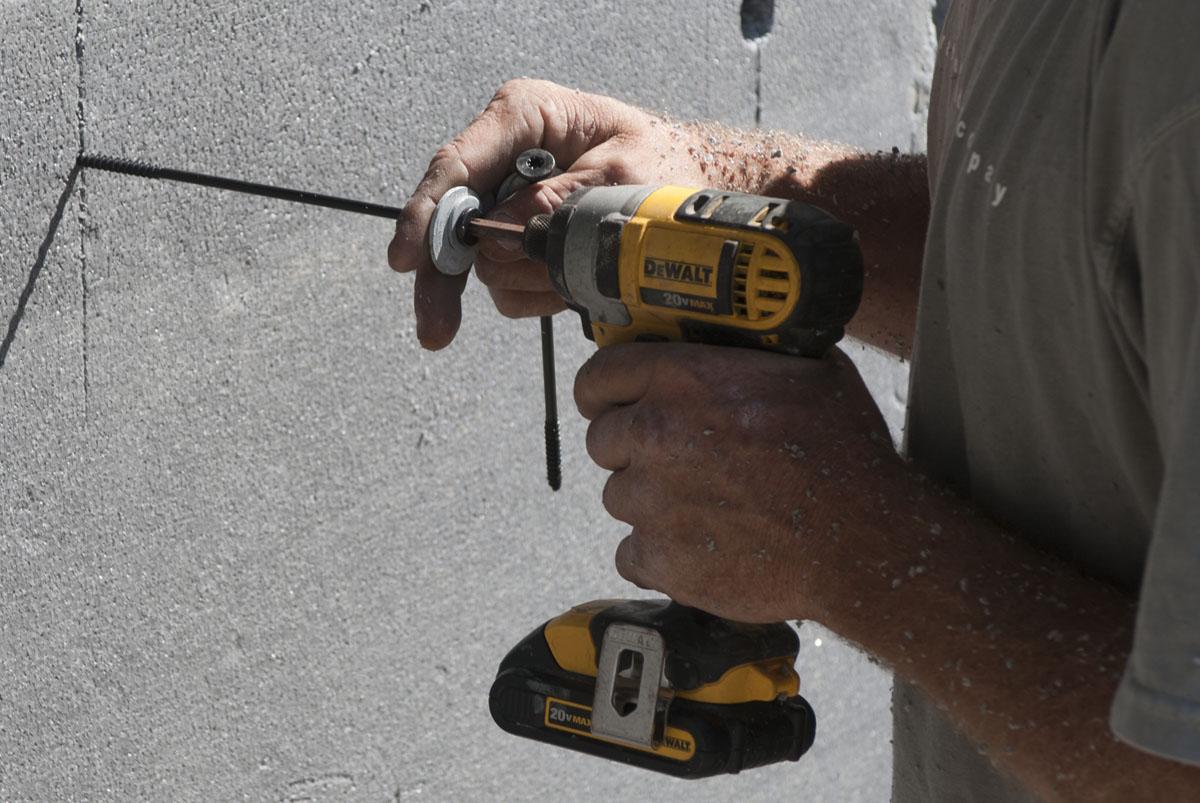
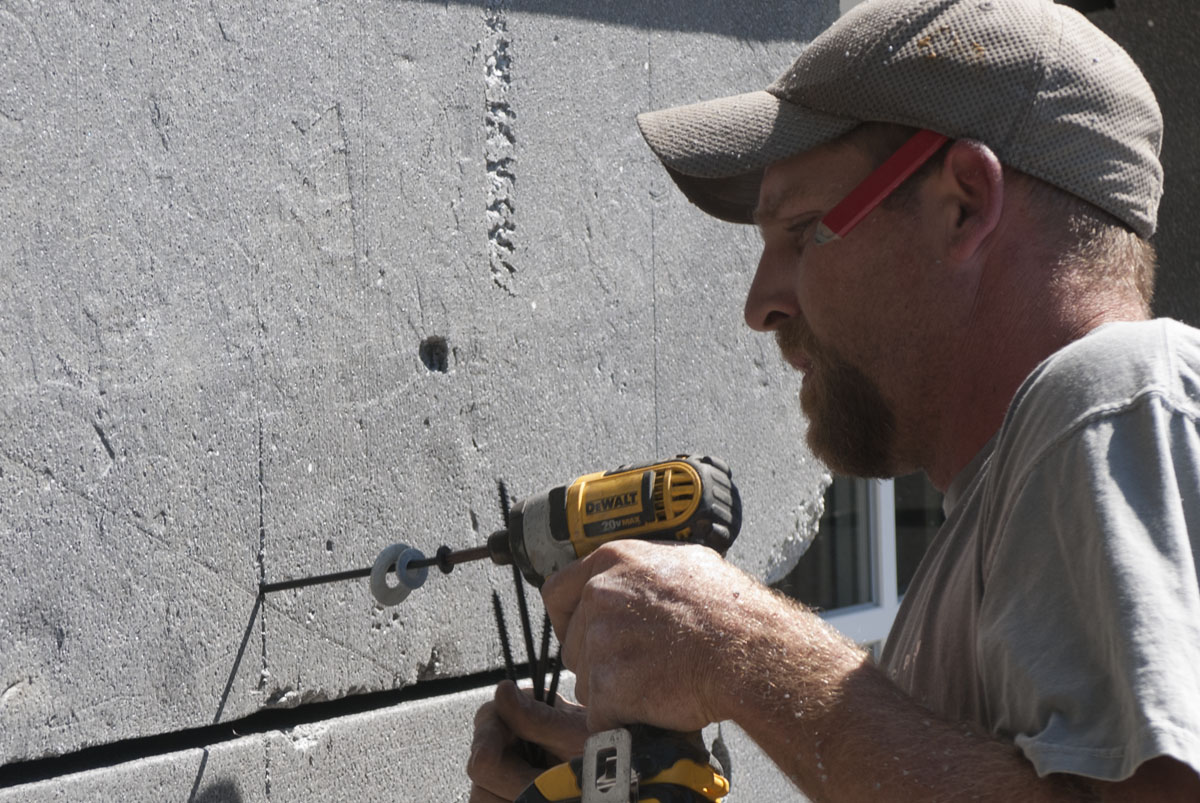
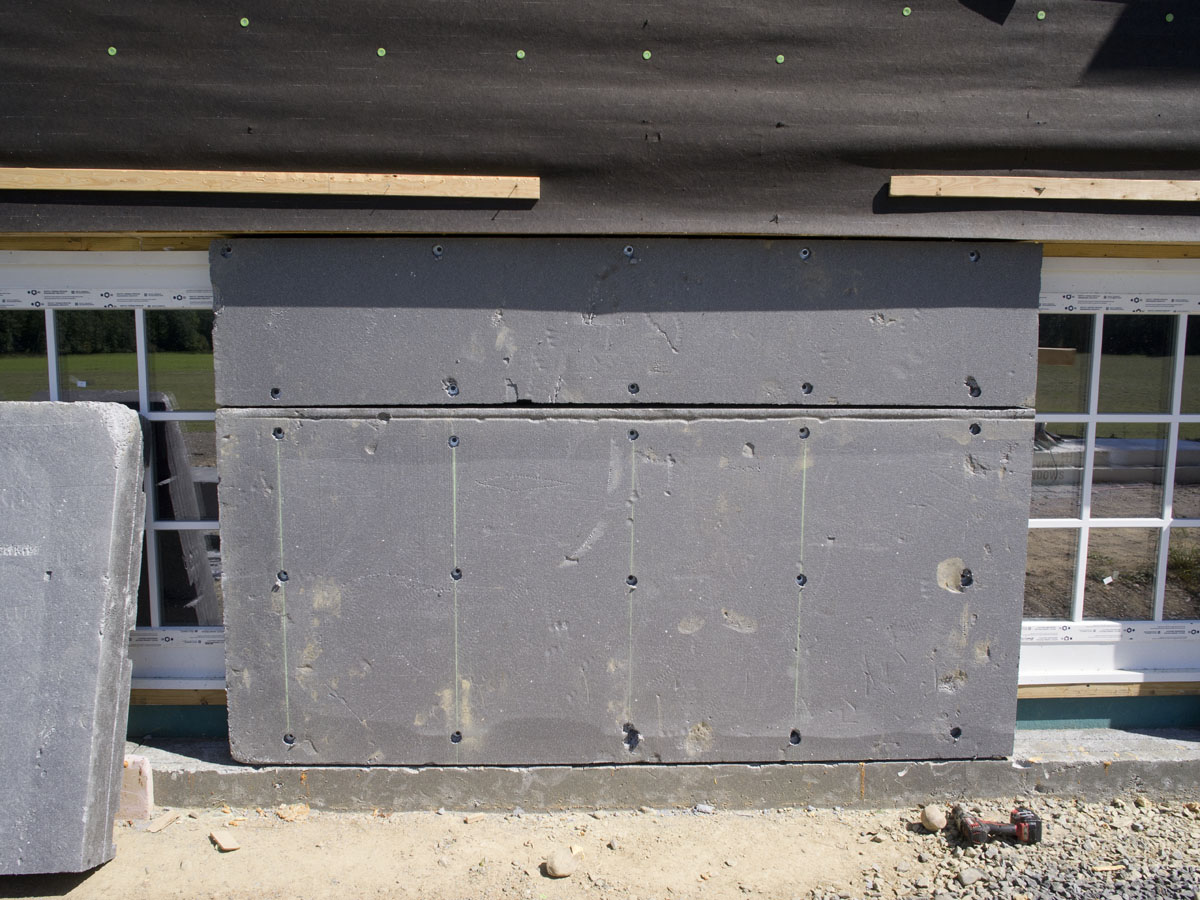
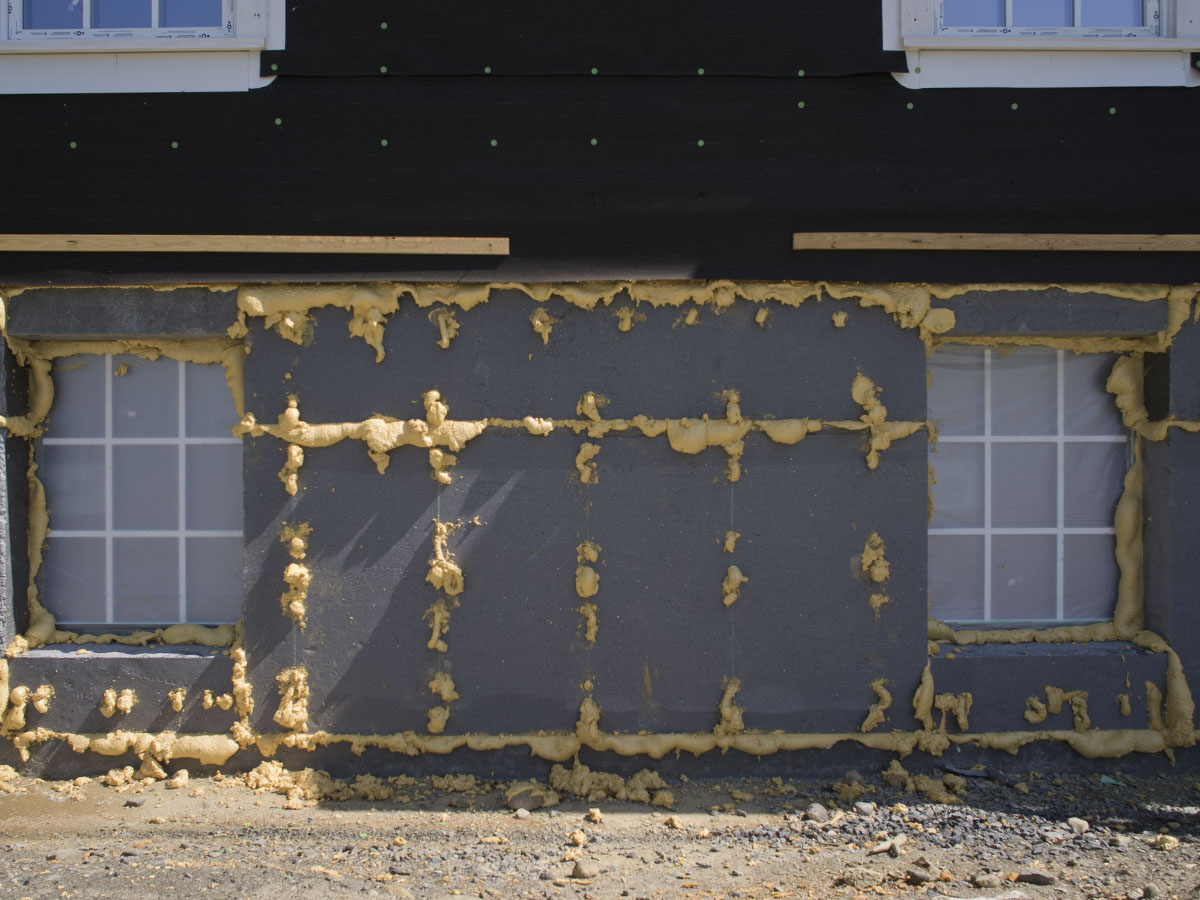 Neopor insulation blocks are fitted and screwed onto furring strips. After the attachment , gaps will be filled with expanding foam insulation. The application of these blocks will complete the envelope of insulation running under the slab and footing, then up the exterior of the poured concrete foundation. The foundation and slab are completely insulated from ground contact and thermal bridging.
Neopor insulation blocks are fitted and screwed onto furring strips. After the attachment , gaps will be filled with expanding foam insulation. The application of these blocks will complete the envelope of insulation running under the slab and footing, then up the exterior of the poured concrete foundation. The foundation and slab are completely insulated from ground contact and thermal bridging.
Tag Archives: Neopor
SIPs cookie gets a tastier grey filling
Imagine a cookie sandwich with sheets of wood outside and foam inside. Big cookie panels (SIPs) will become the walls and roof of our gingerbread house. Yesterday we decided to try a new-and-improved recipe for the foam filling.
We were happy with our conventional white rigid foam until Jeff Brooks at Vermont Timber Frames started talking up Neopor and snagged us an upgrade at no additional cost. Neopor is an advanced type of EPS with graphite added. Because Neopor offers better insulation, we can slim down all around — thinner SIPs and thinner glulam beams to hold them up. Switching to Neopor will save us money short-term on construction materials and long-term on utility bills. The R-value is better than ever, with our 10.25″ wall panels increasing from R-37 to R-43 and the 12.25″ roof panels up from R-45 to R-52.
Neopor is all over the green building blogs. In comparison to alternative products, it offers a greater benefit at a lower cost, along with less of an environmental burden, say manufacturers. Fewer raw materials are needed to achieve the same insulating performance. Better insulation, less material.

